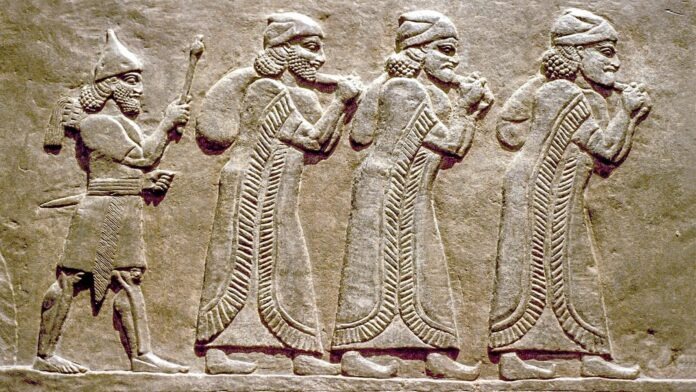The Ingenious Plumbing of Ancient Crete: A Minoan Marvel
In the sun-drenched embrace of the Mediterranean, the island of Crete stands as a testament to ancient ingenuity and innovation. Emerging from the mists of time, the Minoan civilization, which thrived from approximately 3000 to 1100 BCE, left behind a legacy that not only captivates historians but also ignites the imagination of those who yearn to understand the marvels of human achievement. Among their most astonishing contributions was a sophisticated plumbing system that included the world’s first flush toilet, a feat that signifies both advanced engineering and a deep understanding of public health and sanitation.
The Ingenious Minoans: Masters of Ancient Engineering
The Minoans, famed for their artistic prowess and stunning palatial architecture, were also pioneers in technology and engineering. The heart of this ancient civilization pulsed within the walls of the Palace of Knossos, a sprawling complex that dazzled with vibrant frescoes and intricate designs. Constructed around 1700 BCE, this architectural marvel was not only a royal residence but also a hub of innovation, particularly regarding water management—a domain where the Minoans truly excelled.
The World’s First Flush Toilet: A Technological Wonder
Within the grand halls of Knossos lies an extraordinary artifact of ancient innovation: the world’s first functioning flush toilet. This remarkable device consisted of a wooden seat perched above a rudimentary plumbing system, far beyond the primitive sanitation practices of the time. Intriguingly, it was part of a comprehensive water management system that utilized principles of gravity and pressure—principles that would not be properly appreciated again until the 19th century. This clever engineering transformed what could have been merely functional into a remarkable piece of technology that underscored the Minoans’ advanced understanding of their environment.

The flush toilet was ingeniously connected to a network of terracotta pipes and stone channels, ensuring waste could be carried away with efficiency. This level of sophistication offers a window into the Minoan mindset: a society that prioritized hygiene and comfort long before later civilizations would even begin to grasp their significance.
Beyond the Toilet: A Complete Water Management System
The Minoans’ engineering accomplishments transcended beyond just the toilet, embodying a holistic approach to water management that was nothing short of revolutionary. The drainage systems within Knossos were designed not merely to remove waste but to protect and preserve the palace against the elements. Rainwater was ingeniously channeled from rooftops into storage cisterns, preventing potential flooding and structural damage during storms while storing water for later use.
Mastering the Elements Through Engineering
This sophisticated system allowed fresh water to flow through the palace for drinking and bathing while managing waste efficiently—all achieved without the benefit of modern technology. Instead, it relied on natural gravitational flow, demonstrating the Minoans’ acute awareness of their surrounding environment and their ability to utilize it to its fullest potential.
A Lost Technology
Perhaps the most intriguing aspect of the Minoan plumbing system is its sudden disappearance from human knowledge after the decline of the Minoan civilization around 1100 BCE. Factors contributing to this downfall may include natural disasters or invasions, but regardless, the plumbing innovations that defined Minoan life vanished alongside them.

For nearly three millennia, the advanced sanitation systems crafted by the Minoans were forgotten. It was not until the dawn of the Industrial Revolution that Europe would rediscover plumbing systems, often unaware they were reawakening technologies long lost to time.
Rediscovering Ancient Wisdom
The early 20th century brought a renaissance of understanding as excavations of Knossos revealed the Minoans’ remarkable achievements, challenging long-held assumptions about ancient technological capabilities. This ongoing discovery highlighted not only the brilliance of Minoan engineering but also prompted questions regarding other ancient inventions that might similarly have slipped through the cracks of history.
The Legacy of Innovation
While the Romans are frequently celebrated for their aqueducts and public baths, the Minoans achieved comparable—and in some respects more advanced—water systems at the household level a millennium earlier. When we gaze upon modern plumbing today, it is easy to overlook the deep historical roots it possesses. Yet the story of Minoan plumbing serves as a poignant reminder of human ingenuity. Their remarkable system, complete with indoor plumbing and drainage networks, reveals that technological advancement does not always follow a linear path. It is instead a meandering journey marked by cycles of discovery, innovation, and sometimes, profound loss.

The legacy of the Minoans continues to inspire modern minds, highlighting how ancient civilizations created solutions to fundamental human needs that served them effectively for generations. The ingenuity displayed through their plumbing prowess is a testament to the creative problem-solving abilities of our ancestors, a narrative that weaves through the fabric of human history and serves as a source of inspiration for future generations.
Conclusion
The Minoan civilization of ancient Crete, with its advanced engineering and innovative plumbing systems, challenges our preconceptions about the capabilities of early civilizations. Their contributions remind us that the path of technological progress is complex and that we stand upon the shoulders of those who came before us. As we marvel at the ruinous beauty of Knossos and ponder the whispers of a bygone era, let us carry forward the spirit of curiosity that drove the Minoans to create solutions that would remain unparalleled for thousands of years.
